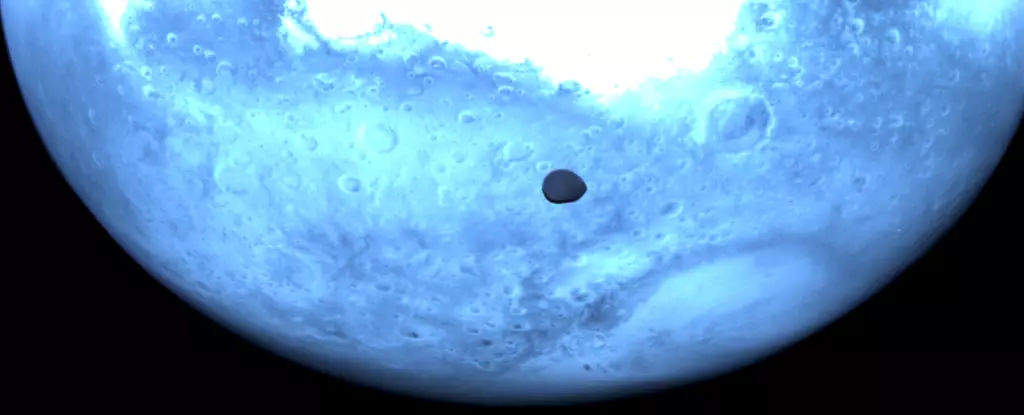In a remarkable stride for space exploration, the European Space Agency’s (ESA) HERA mission has successfully passed by Mars, providing a unique opportunity to observe Deimos, one of the red planet’s elusive moons. As humanity continues to seek answers in the depths of space, the HERA spacecraft’s trajectory offers a combination of scientific intrigue and practical implications for planetary defense—an area of mounting urgency in our increasingly vulnerable world.
The HERA mission is a pivotal part of a comprehensive effort to understand how humanity might defend against potential asteroid collisions. Following NASA’s successful 2022 demonstration of asteroid deflection technology, HERA aims to assess the consequences of this groundbreaking impact and contribute to the development of effective strategies for safeguarding our planet from cosmic threats.
Unveiling the Mysteries of Deimos
During its flyby, HERA approached Deimos within an astonishing 5,600 kilometers, capturing approximately 600 images at a staggering velocity of 33,480 kilometers per hour. These rare images not only contribute scientific data but also provide aesthetic delight, showcasing Deimos in an unexpectedly vibrant hue—thanks to the use of advanced thermal infrared imagers. This captivating blend of art and science enhances our understanding of the celestial body, which is shrouded in mysteries about its origins and composition.
Scientists remain divided on how Deimos evolved. Some propose that it is a captured asteroid, a remnant flung into orbit by Martian gravity, while others hypothesize that it may have emerged from debris generated by a colossal impact event on Mars. The newly acquired data from HERA seeks to explore these hypotheses and possibly solve this long-standing enigma.
Testing the Frontiers of Planetary Defense
While acknowledging the scientific significance of the flyby, it is crucial to recognize its implications for planetary defense. As Earth faces an array of potential space hazards, ESA’s HERA mission exemplifies a proactive approach. By re-evaluating the physics underlying asteroid collisions, scientists hope to assess whether techniques like the one demonstrated by NASA could serve as viable methods for future interventions.
HERA’s upcoming tasks underscore the dual objectives of exploration and defense. By focusing its sensors on Dimorphos—where NASA’s DART mission recently demonstrated the possibility of deflection—the ESA aims to analyze the effectiveness of impact strategies for neutralizing future threats. Achieving a deeper understanding of how asteroids behave under duress will be fundamental to developing techniques that can confidently mitigate risks to Earth.
Addressing an Increasingly Pressing Challenge
The ESA is not alone in its efforts. The urgency to refine our planetary defense systems is becoming increasingly apparent, especially as new celestial bodies are discovered on trajectories that may pose risks to Earth. The recent case of asteroid 2024 YR briefly igniting fears of a potential city-ending impact exemplifies the precarious nature of our planetary security. Detection initiatives are evolving, allowing scientists to identify asteroids more rapidly than ever before.
Richard Moissl, head of ESA’s planetary defense office, recognizes a future where asteroid detections become a more regular aspect of our interactions with space. His assertion that we will come across a growing number of asteroids is a call to action for global cooperation in developing a proactive and cohesive defense strategy. The prospect of the Ramses mission—aimed at further studying an asteroid poised to make a close flyby of Earth in 2029—serves as a reminder of the evolving landscape of cosmic threats and our response mechanisms.
The Intersection of Exploration and Protection
As exploration and planetary protection converge, the scientific community must embrace the dual implications of missions like HERA. They represent not only the quest for knowledge but also a clarion call to prepare and protect the planet. With the universe still holding innumerable secrets, missions such as these carry a profound responsibility—navigating human curiosity while ensuring a safer future amidst the cosmic unknown.
As we stand on the precipice of thrilling discoveries and profound challenges, the continued development of planetary defense systems must be a priority—a synthesis of astronomy, technology, and international collaboration, united in the endeavor to secure a better tomorrow for all.

